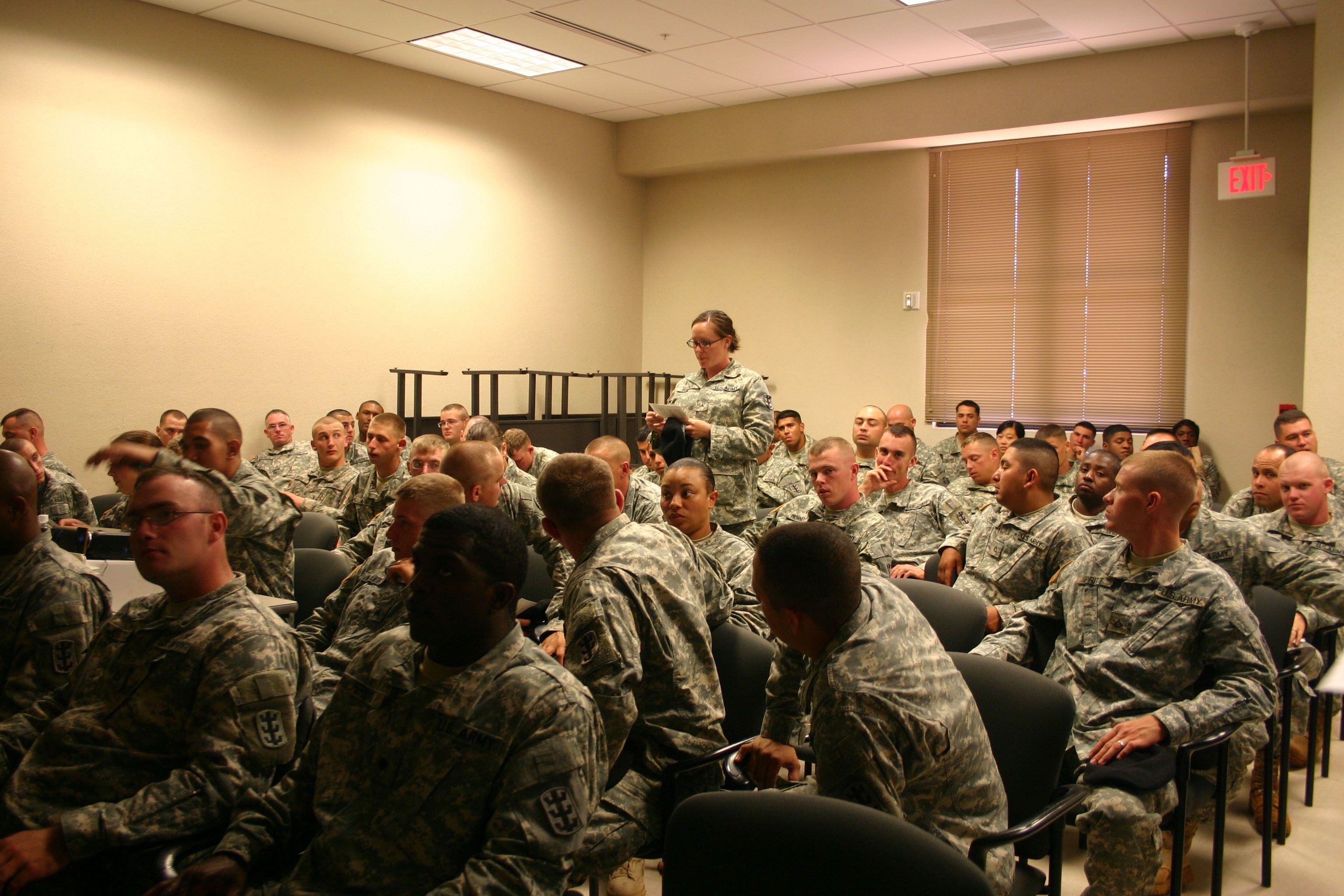Part one of a two-part series examines how to intervene
SCHOFIELD BARRACKS, Hawaii - You enter the barracks, you see a couple stumbling down the hallway. Their hands are all over each other in a clearly sexual way.
A few minutes later, you hear a struggle, then loud voices and yelling coming from the room they entered. What would you do'
"Kick down the door," responds a Soldier from the back of the room.
"Knock on the door and see what's up," calls out another.
"Call staff duty or military police," said a few others.
A bells rings and interrupts the last response.
Unconcerned by the disruption, Shannon Poppa, victim advocacy/sexual assault prevention education and training specialist, continues the dialogue.
"There are absolutely a variety of different ways to intervene," she said, engaging a group of more than 100 Soldiers of both genders in a discussion about bystander intervention during a Sexual Assault Prevention and Response Program (SAPR) brief, here, March 25.
Poppa is incorporating scenarios like the one described into her training, to introduce principles from the Army's new "I. A.M. Strong," sexual assault prevention campaign.
The program asks Soldiers to have the personal courage to Intervene (I), Act (A) and Motivate (M) others to stop sexual harassment, assaults, sexually offensive language, innuendos and gestures that can create an environment friendly to abuse.
According to Poppa, combating what is called the "bystander effect" starts with education.
"Sexual harassment is a precursor to sexual assault," she said.
According to a 2006 Woman's Responsibility survey, almost 33 percent of victims said their perpetrator had harassed them prior to the assault.
The bell rang again and Poppa continued explaining the current sexual assault statistics to the group.
One in six women and one in 33 men are victims of attempted or completed rape in their lifetime, she stated.
According to recent statistics, the picture of a sexual assault offender may not be so easily recognizable. Seventy-three percent of sexual assaults are perpetrated by a non-stranger; 38 percent by a friend or acquaintance, 28 percent by a former or present partner and seven percent by a relative.
"Every two minutes, someone in the U.S. is sexually assaulted," she said and as if on cue, the bell rang again - its meaning now unpleasantly apparent. Sexual assault is the most underreported crime in the U.S. and possibly the most underreported crime in the military.
Drugs and alcohol increases a person's risk to either become a victim or be an offender. Criminal Investigative Command (CID) data from 2008 revealed that 53-66 percent of all sexual assault cases involved alcohol.
Poppa showed a quick video clip of drinks being served at a busy bar and asked the group, "Can you spot when and who places a drug into the drink'" During the replay, in slow motion, everyone spots the slight of hand.
She asked the group to consider what their role, as a bystander, would be in a situation such as this.
"(The information) changes everyone's actions, and I think it opens your eyes," said Pvt. Andrea Washington, 65th Engineer Battalion. "The interaction with other Soldiers during the brief gives you more insight into what other people are thinking regarding the subject."
"We all assess situations differently; we all have different reactions ... leading to different levels of intervention," said Brenda Huntsinger, U.S. Army Garrison-Hawaii (USAG-HI) sexual assault response coordinator, about the types of discussions the scenarios initiate.
During the next five years, the I. A.M. Strong program will work to establish an Army culture that intervenes to stop sexual assault, and these conversations are just the beginning, Huntsinger said.
The bell rang again.
This time, Poppa asked a Soldier who had been keeping count, how many times the bell rang during the brief.
"Twenty-seven," he replied. Each ring representing statistically the number of people who may have been sexually assaulted during in the brief.
The SAPR briefs are an annual training requirement conducted by request through the USAG-HI SAPR office.
(Editor's Note: The Hawaii Army Weekly will run an article next week focusing on sexual assault victim response, assistance and reporting options.)


Social Sharing